I have been working with AI voice agent platforms for a while now, and Voiceflow was one of the first tools I tried. It sounded great on paper; no code, intuitive interface, and the ability to build out voice-based agents.
But as I dived deeper into building, testing, and scaling, I started noticing some limitations that made me think, "There’s got to be something better out there"
So, I went on a hunt for alternatives. I tested a handful of other AI voice agent platforms, focusing on how well they handled voice quality, latency, and customization. After spending some time with each of them, I am sharing my thoughts and why I ended up choosing Synthflow AI as the best alternative to Voiceflow.
Why Voiceflow Might Not Be Your Best Choice
When I first tried Voiceflow, I liked how easy it was to set up. It’s a no-code platform, and setting up basic voice agents was a breeze. However, as I started to build more complex agents, I ran into a few problems that made me look for better options:
Voice Quality and Latency Issues:
One of the biggest problems I had with Voiceflow was the voice quality. It often sounded robotic, and there was a noticeable delay. In real-time conversations, this became a big issue. For something like AI voice agents, you need zero latency and clear voices, and Voiceflow didn’t deliver that.
Limited Customization for Voice Interactions:
I couldn’t control the tone, speed, or pacing of the voice as much as I wanted. It was fine for simple use cases, but if you want more flexibility, Voiceflow felt limited.
Dependence on External APIs:
Voiceflow depends on third-party APIs for speech-to-text and text-to-speech. This caused some delays and made it harder to get everything running smoothly. I needed a more integrated solution.
Pricing Structure:
As I scaled up with Voiceflow, the pricing became confusing. There were extra charges for minutes, features, and support. It got pretty expensive as I tried to expand.
What to Look for in a Voiceflow Alternative
When looking for an alternative to Voiceflow, these are the things I focused on:
Better Voice Quality and Zero Latency:
You need a platform with natural-sounding voices and no delays in conversations. If there's a lag or the voice sounds robotic, it will affect the user experience.
Customizable Voice Interactions:
I wanted more control over the tone, speed, and pacing of the voice. The more options you have to customize the conversation, the better.
No-Code Setup:
I didn’t want to spend weeks building out code. I needed something that was easy to set up and maintain, so a no-code platform was essential.
Easy Integration:
I wanted a platform that would play well with other tools I already use; whether that’s a CRM, calendar, or task manager. Integration is key for efficiency.
Clear and Affordable Pricing:
I needed a platform that offered transparent and reasonable pricing, especially as I scaled. No hidden fees or complicated models—just clear, simple pricing.
Top 5 Voiceflow Alternatives for Building Conversational AI Voice Agents
After testing a few options, here are the 5 best alternatives to Voiceflow that I found to be better when it came to voice quality, latency, and customization.
Synthflow AI
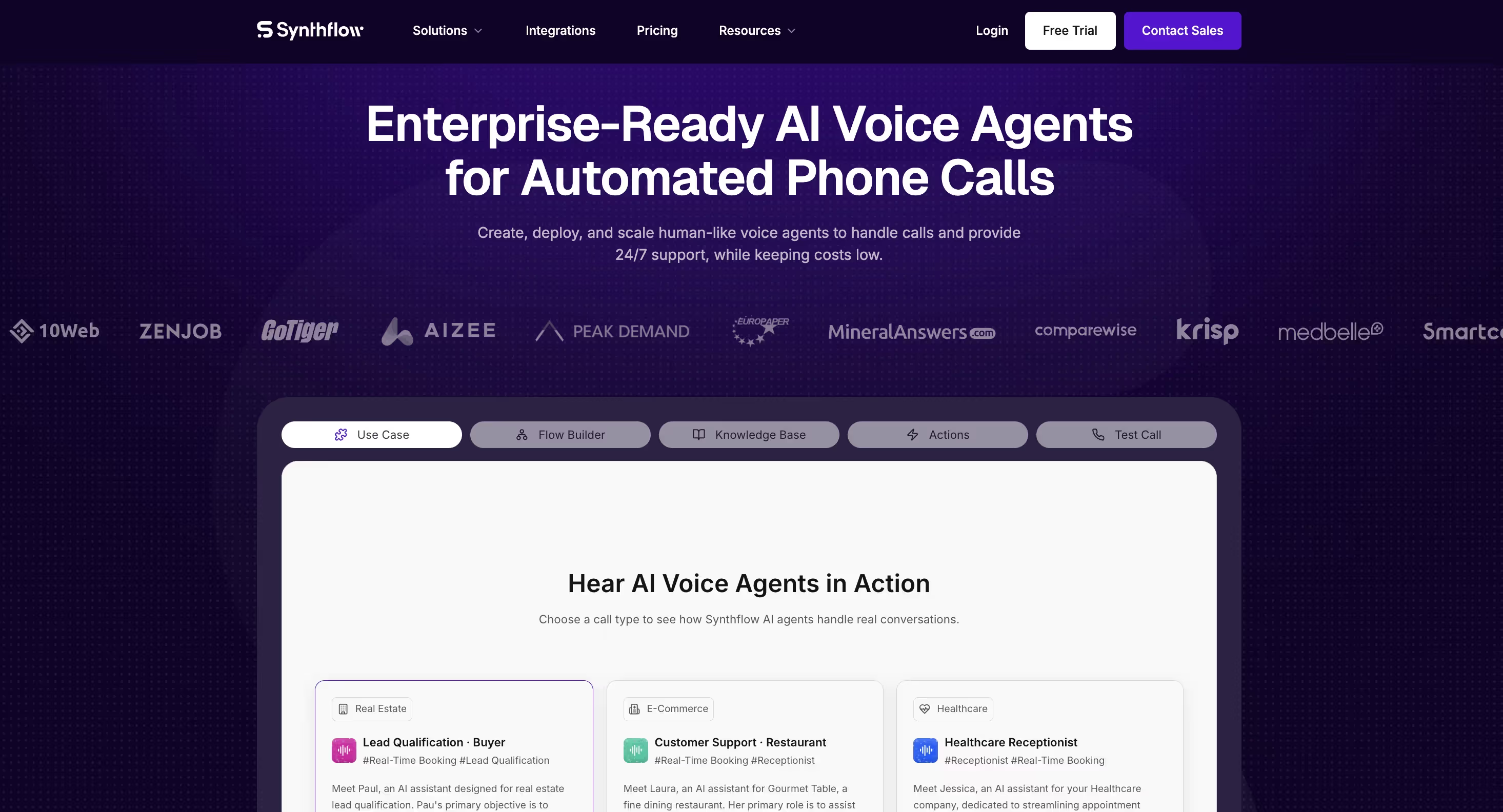
After testing Synthflow AI, it became clear that this was the best option for me. It was the only platform that offered zero latency and high-quality, natural-sounding voices. The setup was easy with the no-code interface, and I could fully customize my AI agent without any issues.
What stood out to me the most was that Synthflow doesn’t rely on third-party APIs for voice features, which helped with consistency and quality. It gave me everything I needed in one package.
Key Features:
- Zero latency for real-time interactions
- High-quality voices that sound natural
- Full customization over tone, speed, and pacing
- Seamless integration with tools like HubSpot, Google Calendar, and more
Pros:
- Easy no-code setup with drag-and-drop interface
- Automated appointment booking and scheduling
- Natural-sounding voices with customizable tone and pacing
- Voice recognition and natural language processing
Cons:
- Focuses mainly on voice
Best For:
Businesses that like call centers that need high-quality voices, full customization, zero latency, and easy integrations.
Bland AI
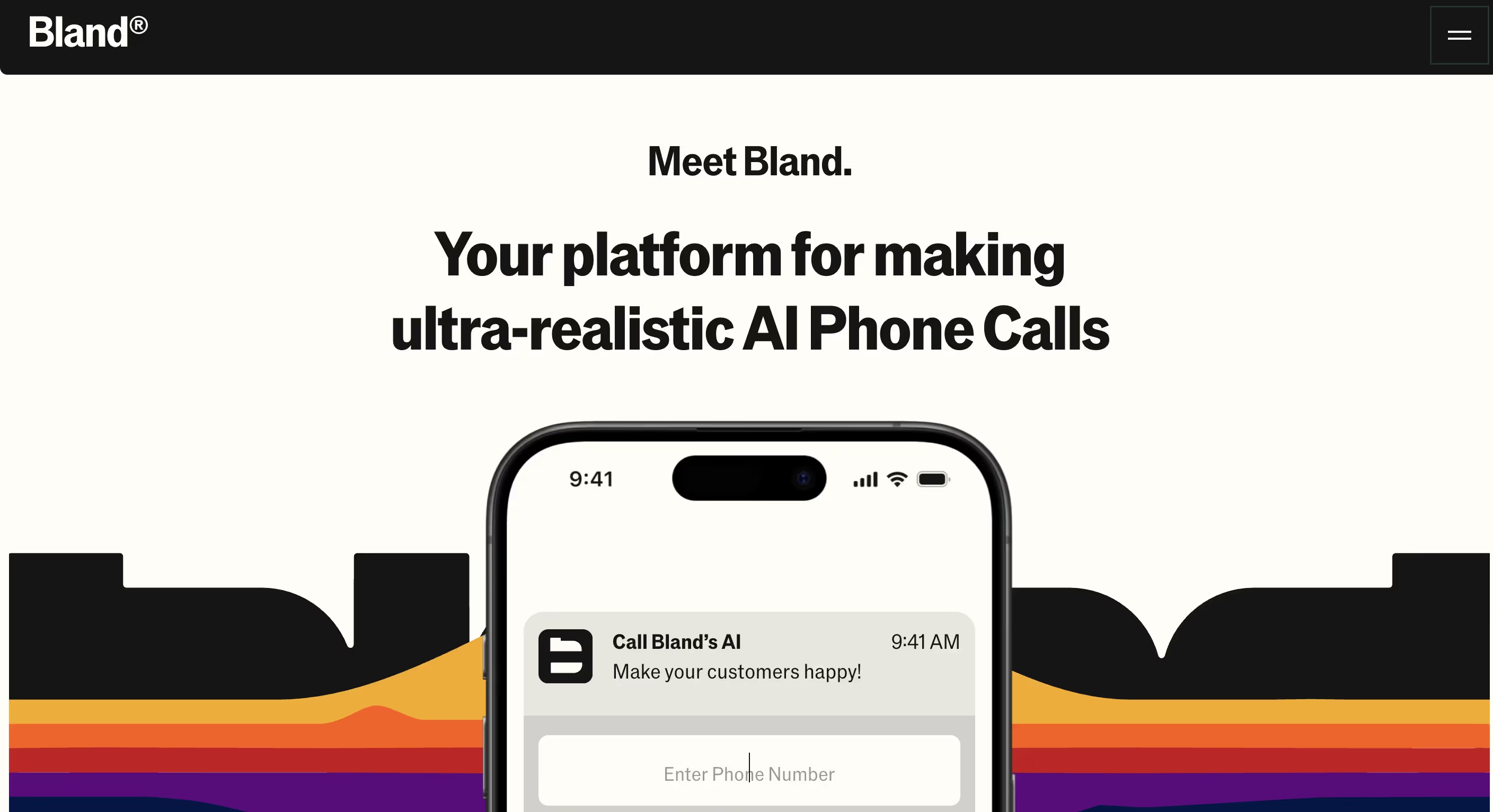
Bland AI offers a lot of features for building AI-powered voice agents, but it didn’t measure up to Synthflow for me. The voice quality was often robotic, and there were noticeable latency issues that made conversations feel awkward. It’s fine if you just need basic functionality, but for high-quality real-time conversations, Bland AI fell short.
Key Features:
- Multi-channel support (voice, chat)
- Automated appointment booking and scheduling
- Integration with popular tools like Salesforce and HubSpot
- Voice recognition and natural language processing
Pros:
- Multichannel support for both voice and chat
- Good integration with popular CRMs
- Offers some advanced AI features like appointment booking
Cons:
- Latency issues affecting voice quality
- Complex setup, might need a developer for full integration
Best For:
Teams that need multi-channel support and are okay with some latency issues in voice interactions.
Vapi AI
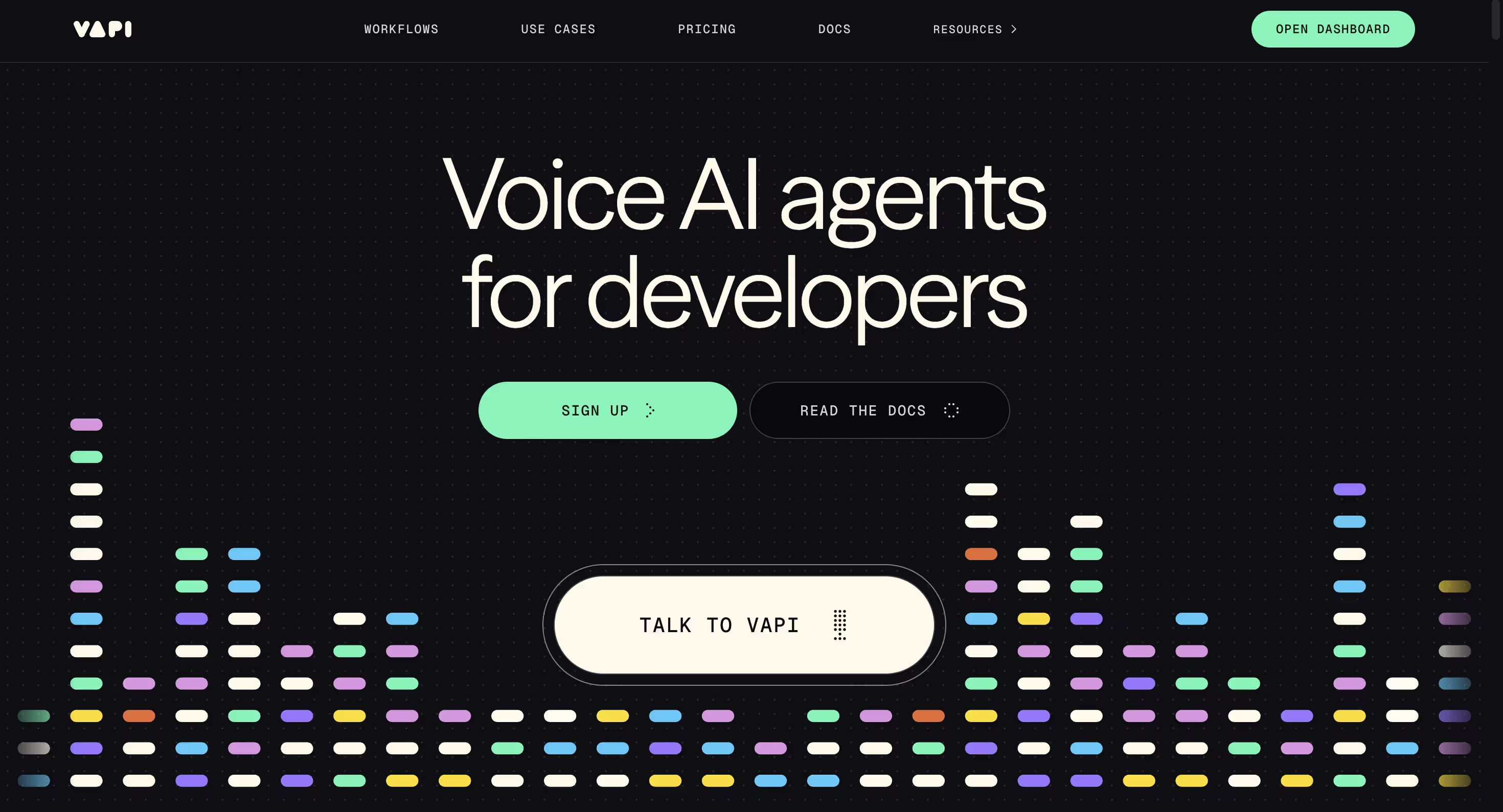
Vapi AI is a good option if you want flexibility and are okay with working with external APIs, but after testing, I found the voice quality to be lacking. The latency issues were also noticeable, and the platform relied heavily on third-party APIs for voice functionality, which caused delays.
Key Features:
- Low-code setup for easy integration
- Supports external voice models like Deepgram and ElevenLabs
- Customizable workflows to fit your business needs
- Scalable for large operations
Pros:
- Open-source and customizable for developers
- Flexible with external APIs and integrations
- Ideal for larger teams with technical resources
Cons:
- Voice quality is not as good as Synthflow
- Latency and reliance on third-party APIs
Best For:
Developers who need full control over voice models and integrations but can handle technical complexity.
Play.ai
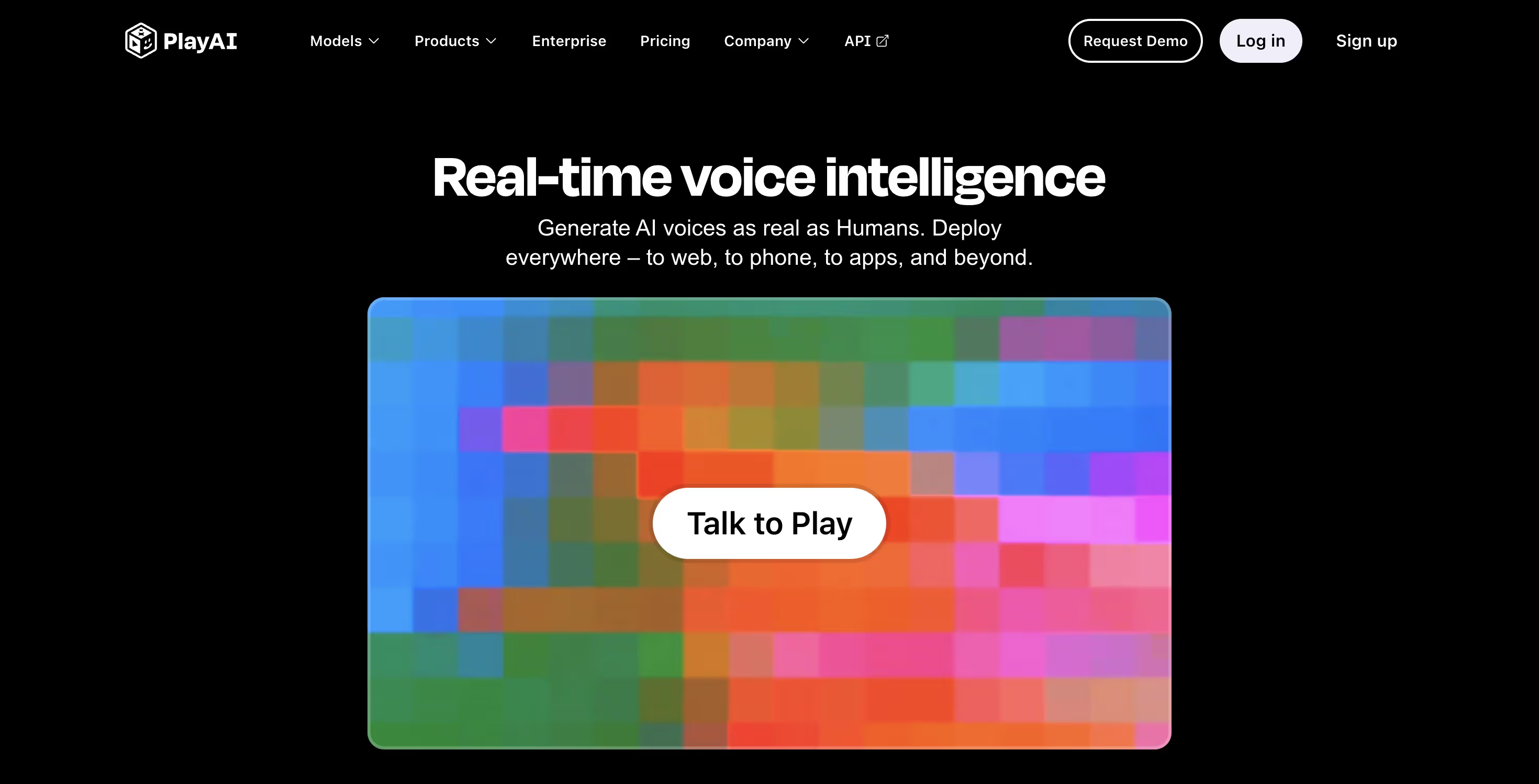
I tested Play.ai and while it has good interactive voice flows, I wasn’t impressed with the voice quality or the latency. There were some delays during conversations, and the voices didn’t sound as natural as I hoped. However, it does offer real-time CRM updates and interactive workflows, which is a plus for teams focused on customer engagement.
Key Features:
- Interactive voice flows with personalized responses
- Real-time CRM integration to track customer data
- Voice recognition and text-to-speech
- Multichannel support for voice and chat
Pros:
- CRM integrations for real-time updates and better engagement
- Dynamic voice flows for custom interactions
- No-code setup for quick deployment
Cons:
- Latency and voice quality issues
- Pricing can be complex, with extra charges for additional minutes
Best For:
Businesses needing CRM integrations and interactive voice flows but are okay with latency during peak traffic.
Retell AI
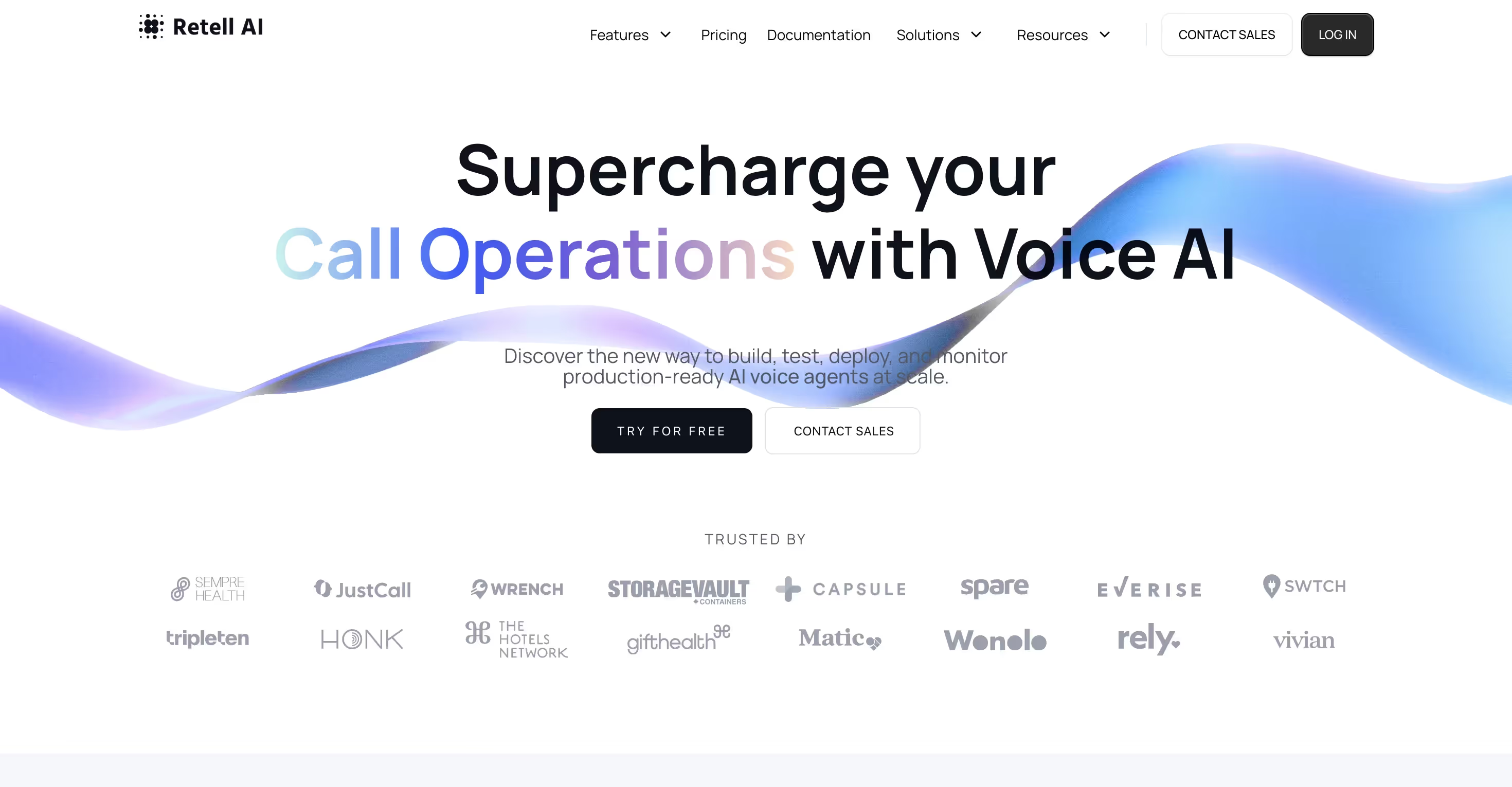
Retell AI is another low-code platform, but I found it wasn’t as flexible as Synthflow. The voice quality was decent, but it still had latency problems, and it relied too much on external APIs for voice processing. While it’s good for basic setups, it’s not as reliable for real-time high-quality conversations.
Key Features:
- Low-code setup with voice flow management
- Multilingual support to scale across different languages
- High scalability for large call volumes
- Integration with popular third-party tools like Salesforce and HubSpot
Pros:
- Scalable for high-volume calls and multilingual support
- Low-code setup for quick implementation
- Flexible for businesses with specific needs
Cons:
- Voice quality issues due to reliance on external APIs
- Limited customization compared to Synthflow
Best For:
Businesses needing a scalable solution with basic voice capabilities but don’t mind dealing with technical complexity.
Comparison of the Best Voiceflow Alternatives in 2025
Conclusion
After testing all the alternatives, Synthflow AI stands out as the best option for businesses that want superior voice quality, zero latency, and full customization. Unlike Voiceflow, Synthflow offers an all-in-one solution with no reliance on external APIs, making it a more reliable and efficient choice.
If you’re looking for a platform that offers seamless integrations, dynamic voice interactions, and transparent pricing, Synthflow AI is the ideal choice.
Give Synthflow’s free trial a try to see for yourself why it’s the best Voiceflow alternative for your business.
FAQ
Can Synthflow Be Customized to Suit Any Business Needs?
Yes! Synthflow’s no-code platform allows you to fully customize your voice agents, from tone to pacing, and tailor it to your specific business needs.
How Does Synthflow Ensure Data Security and Compliance?
Synthflow ensures data security by using SOC 2, HIPAA, and GDPR-compliant systems. Data is encrypted to meet industry standards.
Can Synthflow Be Integrated With Existing Systems and Tools?
Absolutely! Synthflow integrates seamlessly with HubSpot, Google Calendar, Zapier, and over 200+ platforms, allowing you to streamline your workflow effortlessly.






